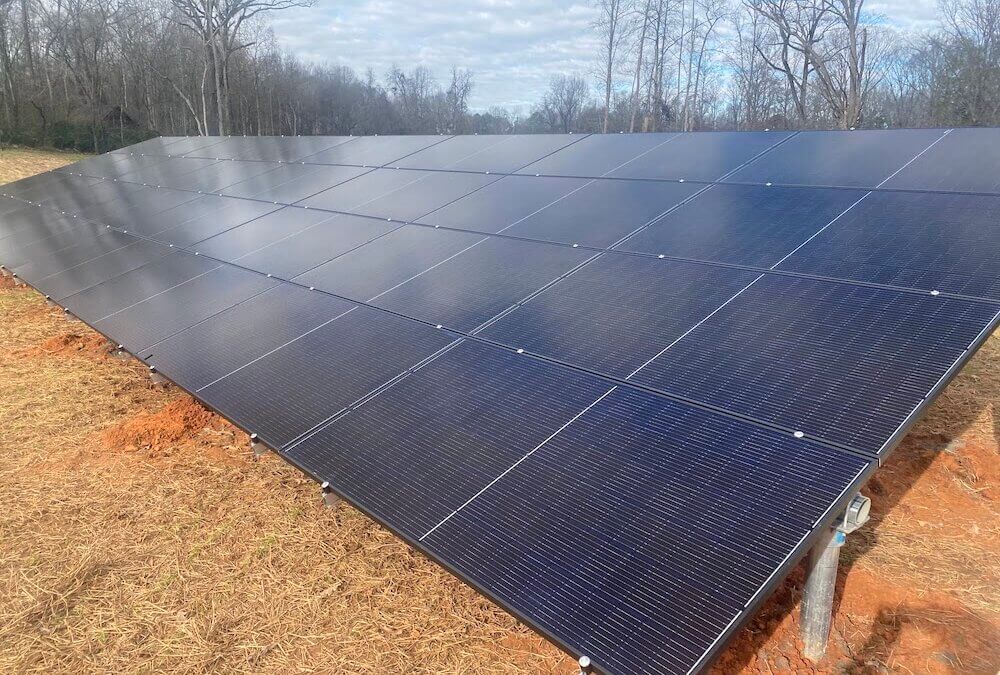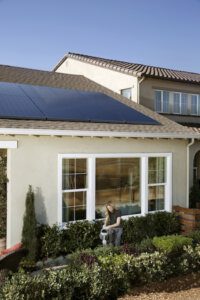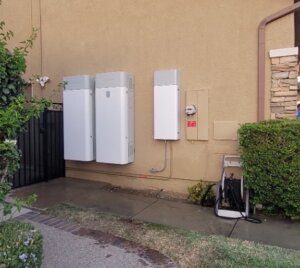Over the past decade, solar power has experienced an annual growth rate of 33%. As solar energy becomes increasingly popular, one of the questions we’re asked the most from our customers is “how much are solar panels in NC?” The simplest answer is that solar costs can vary based on a number of factors.
To help you feel more prepared for your project and make budgeting a bit easier, we’ve put together this detailed guide. We hope it helps you better understand the average cost of solar panels in NC.
Solar Panel Cost in NC by Panel Type
When you’re trying to budget for your solar panel installation project, one of the most important decisions you’ll make is the type of panels to install. There are three primary solar panel types, all with different price tags, so keep that in mind when deciding which panels you want to add to your home.
Monocrystalline Solar Panels
Monocrystalline solar panels offer the best performance, which makes them a popular option with North Carolina homeowners. That superior performance level combined with a more intensive manufacturing process means that monocrystalline solar panels are the most expensive panel option on the market.
However, new technology is helping to improve the monocrystalline panel manufacturing process, so these high-quality panels aren’t quite as expensive as they used to be.
Polycrystalline Solar Panels
Polycrystalline solar panels are a popular option for North Carolina homeowners who want to take advantage of solar energy for a lower price. These panels aren’t quite as efficient as monocrystalline solar panels, but they still offer great performance. They’re also not as difficult to make, so the total cost is lower than monocrystalline panels.
Keep in mind that the gap between monocrystalline and polycrystalline solar panels is smaller now than it used to be, so you might find that it’s worth it to pay a bit more to get high-performance monocrystalline panels.
Thin-Film Solar Panels
The lowest option when it comes to solar costs, is thin-film panels, in part because they’re not as expensive to manufacture. However, they also offer the lowest performance, so you’ll need more of them to adequately power your home. It’s important to keep that in mind as you’re budgeting for your project.
As you’re deciding which panels to buy, you’ll also want to consider that thin-film panels tend to have a shorter lifespan than the other types of panels, so you’ll need to budget for replacement solar costs when planning your project.
Factors That Have the Greatest Impact on Solar Costs
Aside from the types of panels you choose, there are a number of other factors that factor into the total cost of your solar project. Our team here at SHS Pros is here to help you better understand each of these factors as you plan for your solar installation.
The Cost of the Actual Installation
Beyond the cost of the panels themselves, you’ll also have to budget for the cost of the installation. This can vary based on the solar company you hire and the complexity of your installation. The different aspects of the installation that will impact the cost include the following:
- Labor
- Permit fees
- Utility fee
- Sales tax
- Interconnection fee
If you hire the SHS Pros team for your installation, we’ll give you a detailed breakdown of installation costs so you know exactly what to expect.
The Manufacturer of Your Solar Panels
Another factor that will impact the cost of your project is the manufacturer of your solar panels. In many cases, the higher the quality of the panel, the more expensive the base price will be.
The Number of Panels You Need
Beyond the types of panels you choose, the number of panels you need will also impact the cost of your project. Not surprisingly, the bigger your home, the more panels you will need to create a sufficient amount of energy for your needs. Of course, this will mean your project is more expensive than a home that requires less power.
Our team can help you determine how many panels will be sufficient for your needs by determining the following:
- How much space is available on your roof
- How many hours of sun your home gets
- The wattage and efficiency of the panels you choose
- How much energy your household needs
From there, we can help you decide how many panels to install and give you a better idea of how much your system will cost.
The Pitch of Your Roof
As we briefly mentioned above, the complexity of your solar panel installation will have an impact on the cost. In most cases, the pitch of your roof determines the complexity of the project. When you hire our team, we’ll come out to inspect the state of your roof so we can give you a more accurate estimate for your project.
NC Solar Panel Tax Credit Options
One of the many benefits of adding solar panels to your home is that there are tax credits available to help you offset the cost of the project. Both new and existing homes in North Carolina are able to take advantage of the 30% federal solar investment tax credit, which has been extended until 2032.
By taking advantage of this tax credit, you can help save money on your project upfront, making it a great investment for your home. Our team would be happy to explain federal and NC tax credits for solar panels for you in more detail during your initial consultation.
The Company You Hire for Solar Panel Installation
One of the most important decisions you’ll make for your solar panel installation project is the company you hire to complete it. All solar panel companies have different labor and installation rates.
Here at SHS Pros, we proudly operate with honesty and transparency, being upfront about pricing from the very beginning, and willing to help with your solar financing. If something unexpected comes up during the installation, we’ll let you know right away so you never receive a surprise bill. This open communication resonates with our customers, which is why we proudly boast a 5.0-star rating on Google!
Rate of Return for Solar
The average return on investment for solar panels in the United States is about 10%, but that number can vary based on the specifics of your situation. The best way to determine your specific rate of return is to use a simple ROI calculation that includes the following:
- The cost of your solar panels x the 30% tax credit = the savings after the tax credit
- The cost of your solar panels – the savings after the tax credit = your initial investment
- The initial investment / how much you pay your energy company every year = your payback period
While it can take several years to recoup your initial investment, keep in mind that utility costs are on the rise, and solar panels can help you avoid those spikes in costs.
Beyond that, investment in solar offers a better return than many other traditional investments, because you’ll always have to buy power for the rest of your life unless you’re generating it yourself with a solar panel system. Do the benefits of solar costs apply to you?
Payment Options for Your Solar Installation
Now that you know more about what impacts the solar costs for panels, you can start thinking about how to pay for your project. Here are a few options to consider.
Loans
Solar loans can help you navigate the upfront costs of solar power while letting you take full advantage of solar energy in the process. Solar financing includes low monthly payments and low-interest options to help you install solar panels for an affordable price.
Cash
If you have extra liquid cash, you can pay for your solar panels outright, without having to take out a loan. This allows you to start taking full advantage of those tax incentives immediately and enjoying the ROI from your panels.
Home Equity Line of Credit (HELOC)
Another option is to take out a home equity line of credit, using your home’s equity as a lower-interest option so you can more easily pay for your solar panel installation.
Cash-Out Refinance
If you’re planning to refinance your mortgage, you can opt for a cash-out refinance, which allows you to take out cash from your home’s equity. Then, you can use that cash to cover the cost of your project.
Here to Help You Navigate Solar Costs
We hope that by reading through this guide to solar costs in North Carolina, you feel more prepared as you’re planning your project. If you’d like to see more specific numbers based on your home and solar energy needs, we’d be more than happy to put together an estimate for you.
We encourage you to contact our team so we can learn more about your solar needs and answer any questions you may have.




